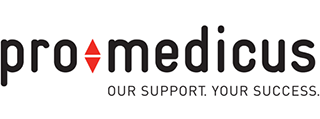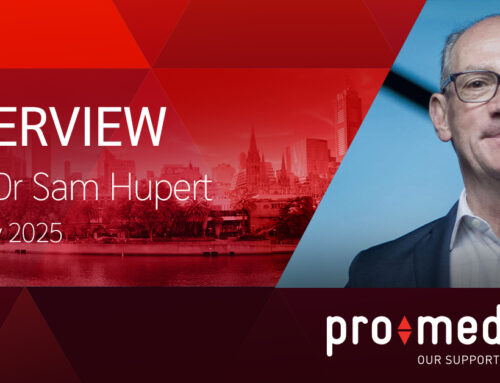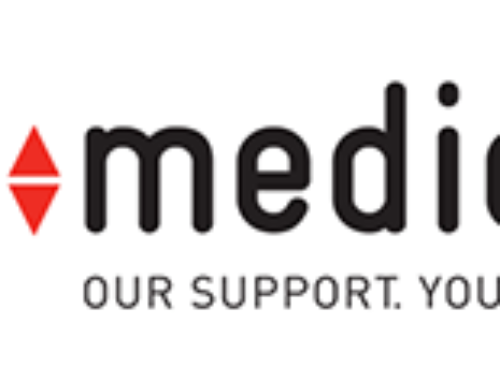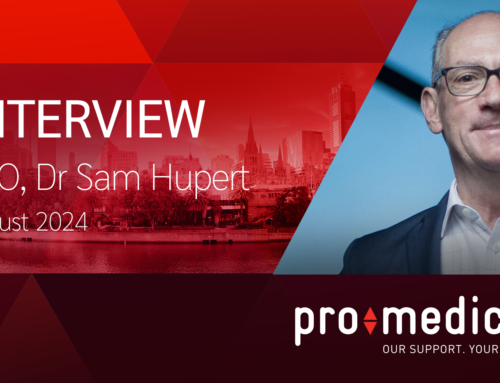17 February 2021; CEO Interview 2020-21 Interim Results – Final – Acrobat pdf 168k
Interview with Dr Sam Hupert, CEO Pro Medicus Ltd
- Half-year results – impact of COVID and appreciating AUD
- Step up in transaction volumes
- $31M – 7-year deal with leading Californian academic health system
- Other recent wins and pipeline
Q: This morning you announced that underlying profit before tax increased by 25.9% despite COVID and headwinds caused by the rapidly appreciating Australian dollar. Can you comment on the impact these had?
A: We were very pleased with the result especially taking into account that in the first three months of the half we were still coming out of the COVID induced dip in examination numbers from March/April 2020 lows. So, we were happy to make up that deficit and improve our revenue and bottom line during the period.
The Australian dollar appreciated very significantly during the half, so clearly it created a headwind as we use a monthly average of the exchange rate to translate our US-dollar earnings to Australian dollars and given that over 80% of our income is generated in the US it did have an impact. On a constant currency basis our revenue would have been $32.93m up 12.4% and the underlying profit before tax would have been $19.66m up 32.0%.
Q: Were you way surprised that revenue held up so well given that many communities worldwide were locked down for so long and that many people put off medical procedures?
A: We were pleased at the speed of recovery particularly following a very sharp drop in exam numbers in mid-March to early-April and that the last three months of the half saw volumes return to normal, and in some cases, even higher than they were before COVID. Although this was not uniform across all geographies, on average it resulted in normal volumes towards the end of the half.
Q: Your margins improved significantly; can you comment as to why and whether we should expect this level of EBIT margins going forward?
A: Margins rose from roughly 51% to 59% on an EBIT level, which resulted from increased revenue coupled with significantly decreased operational expenditure. Costs associated with travel and the RSNA, the large conference we always attend at the end of November (which was virtual in 2020) were significantly reduced, with this partially offset by increased legal expenses as a result of the recent contracts we have won. So, whilst we expect post-COVID to resume travel and attend conferences, we think our capacity to do things remotely, both in terms of sales and implementations, will mean there will be a “new normal” where we can do more off-site than we previously did without reducing our effectiveness. We think this will result in savings going forward. So, whilst we don’t envisage that 59% margins are sustainable long-term, we believe there is scope for margins to improve on what they have been historically.
Q: Can you explain how shares bought for employees under the Long-Term Incentive Scheme impacted on your tax position and how tax will be impacted in the future?
A: The major impact occurred in the previous corresponding period where significant share price accretion resulted in a larger tax deduction and therefore a much lower tax rate in that period. We do not believe this will be the norm going forward and that the current tax rate is more indicative of what we expect.
Q: You mention that not only is this a strong half for PME, but that the second half will be stronger and that you also expect a major step-up in transaction volumes FY22. Can you expand on this please?
A: I think there are a number of factors. Firstly, exam volumes are back to pre-COVID levels and, short of a major third wave, we anticipate they will remain so, if not increasing slightly to cater for the backlog. Secondly, we will get a full 6 months from LMU Klinikum which we implemented in December. Thirdly, we will be implementing three very big contracts – Northwestern, NYU Langone and MedStar in the coming months and whilst we won’t get a full six months of transaction volume from these deals in the second half, we do anticipate receiving a full contribution from these three contracts starting FY22. On top of that, there will be implementations such as Intermountain and our recently announced Californian hospital contract that will commence in the 2nd half and will provide additional revenue in FY22.
Q: Do you have a company policy on payment of dividends – do you try to pay out a certain percentage of profits each half?
A: As a board, we review this constantly. Our main focus when it comes to retained earnings is to ensure that we make the necessary investments in our business, followed by return to shareholders and keeping sufficient funds for any future M&A activities. Whilst we don’t have a fixed policy, our guideline is to pay out approximately 50% of earnings. As it turns out, at 7c per share we are slightly more than 50% which reflects our confidence in things going forward.
Q: Yesterday you announced a $31m, 7 year deal with 5 academic centres in California – UCLA, UCSF, UCSD, UC Irvine and UC Davis. How does this deal compare in relation to the other significant deals that you have done in the past seven months?
A: Each deal is different. This was a group of five high profile academic hospitals, two of which have been voted in the best 20 hospitals in North America, so the tender was highly sought after and very competitive. Being academic, each campus has their own research/data-sciences division, so they share many similarities with some of the institutions mentioned above. Clearly, in terms of contract size, it is one of our larger deals to date.
Q: What does it say about PME’s solution that all five diagnostic imaging departments chose to be unified on a single diagnostic imaging platform?
A: The fact that we received unanimous endorsement from all five campuses we feel is a validation of our belief that we have a truly differentiated offering. Being on one platform opens up the opportunity for cross-campus diagnostic imaging collaboration which we believe will be a first for this network.
Q: The rollout is scheduled to take between 18 and 24 months to complete. Is there a reason for this expanded implementation timeframe?
A: The main reason is that some of the campuses are currently winding down contracts with their existing suppliers. While there is a possibility that they will join us earlier, the current timetable envisages up to 18 to 24 months between the first and last campuses coming online. Initially, two campuses will go live, with the rest spread out based on when their contracts run out. It may be sooner than 18-24 months, but it won’t be longer.
Q: You mentioned that the deal has the option to include Health affiliates in addition to the five campuses. How many affiliates are there and how material do you believe this could be?
A: There are quite a number of affiliates, each performing differing imaging volumes, so it is difficult to predict how material this could be, other than to say that examination numbers from any affiliate that opts to use Visage will be in addition to the existing deal, so they provide inherent upside.
Q: Can you please give an outline of the timing of the rollout of these recent contract wins and how important was/is it that you can install systems remotely?
A: We are scheduled to implement Northwestern, NYU and MedStar in the current (second) half. The fact that we were able to successfully implement Ohio State University remotely during the lockdown of August 2020 is incredibly important, as it proves our remote training capability. We envisage that these upcoming implementations will involve a mixture of both remote and onsite presence, which, as mentioned above, we see as the norm going forward.
Q: Do these deals, and the speed at which you are doing them, point to a noticeable – and potentially sustainable – step-up in activity?
A: As I have said previously, there is no set cadence to how these deals come about, but it is certainly unprecedented to close six such highly prominent deals within such a short period of time.
We are seeing more opportunities coming to market. We believe this is attributable to several factors; exponentially expanding data sets, the heightened need for remote reporting as a result of COVID as well as the strong network effect generated by our rapidly growing customer base. So, there has been strong interest in our offering, which is positive.
Q: An increasing number of your clients are moving to the Cloud. How important is this to PME’s future?
A: Cloud is incredibly important as we are seeing more and more opportunities that are considering Cloud-based solutions. The fact that we are fully engineered from the ground up for Cloud is a major selling point and provides us with the flexibility to deliver what the client wants, be it either private cloud where we deploy our solution in their own data centres or public cloud. We think being able to provide this level of flexibility is a huge strategic advantage.
Q: You recently announced you received US Food & Drug Administration (FDA) approval for your breast imaging algorithm. How important was this announcement?
A: The breast density algorithm is the first of our AI projects, and, using our own AI accelerator platform we were able to go from “concept to FDA approval” in record time. It provides us and our academic research collaboration partners with an important blueprint for future AI algorithm development.
Our next step in the commercialisation process is to have the algorithm installed at a client site and assess the ROI it has both financially and clinically before we look to release it to the broader market.
Q: Could you comment on the company’s pipeline, which you describe as ‘significant, diverse and growing’?
A: We have had a very good run of contract wins over the past seven to eight months and pleasingly we have seen an increasing number of opportunities enter the pipeline in addition to those opportunities that have been progressing through the sales cycle. Importantly, the opportunities are across a range of market segments, including some for multiple Visage products, as well as a healthy mix of Cloud and non-Cloud.
Thank you, Sam
Interviewer: Richard Allen, Oxygen Financial Public Relations
Authorised by the Board of Pro Medicus Limited.



